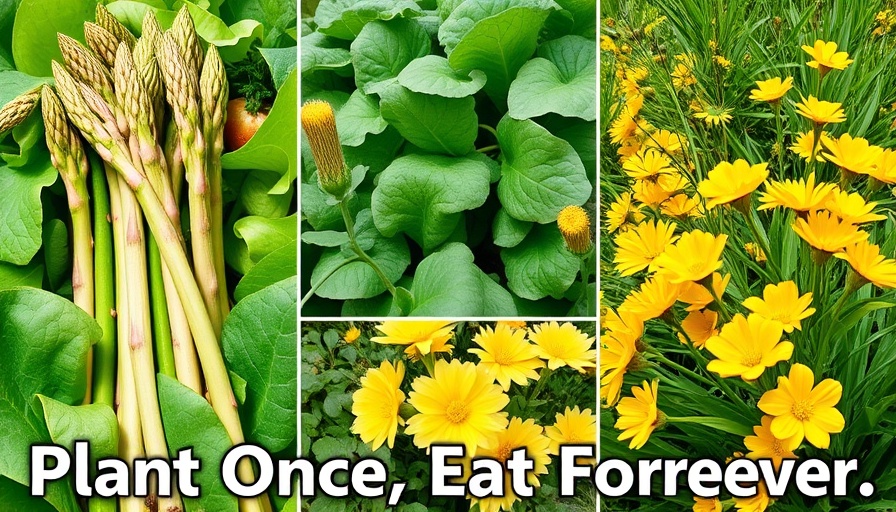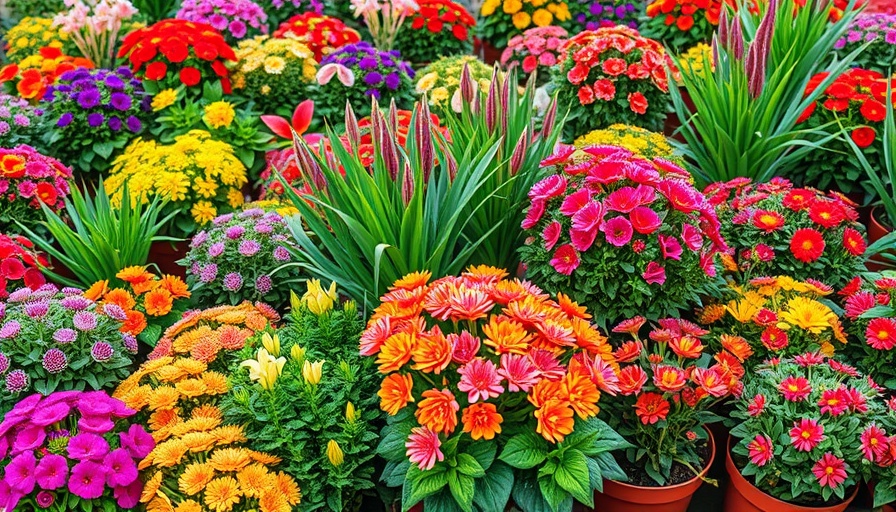
The Joy of Planting Your Own Seed Potatoes: A Beginner's Guide
As the Easter weekend approaches and sprouts of spring begin to peek through the winter chill, many of us in Metro Vancouver are thinking about sowing the seeds for our beloved home gardens. With the phrase “Tomorrow, He is Risen” echoing a sense of renewal, there couldn’t be a more perfect time to introduce your garden beds to the delicious Row 7 seed potatoes. These little packets of potential not only promise a bountiful harvest but also connect you with the joy of growing your own food.
In 'My Row 7 Seed potatoes are here! Tomorrow, He is Risen, and tomorrow these babies are goin’ in the,' the joyous anticipation of spring gardening is explored, inspiring us to delve into practical insights about planting potatoes.
Why Choose Seed Potatoes?
Seed potatoes differ from regular potatoes in that they are specifically cultivated for planting. Looking for disease-resistant varieties? Row 7's potatoes are known for their top-tier quality and unique flavors, which are perfect for the diverse culinary uses found in our multicultural community. Plus, nothing beats the taste of freshly harvested potatoes from your backyard garden.
Not only do these seed potatoes provide an organic option free from harmful chemicals, but they also help foster a sense of accomplishment. The act of planting and nurturing these tubers gives you a rewarding experience that extends beyond just the harvest. Gardening encourages mindfulness, reduces stress, and allows you to connect with nature – benefits more important now than ever.
How to Plant Potatoes: A Step-by-Step Guide
Planting potato seeds might seem daunting for first-timers, but with a few simple steps, you can get started confidently:
Choosing the Right Spot: Find a location with plenty of sunlight and well-drained soil, ideally in a raised bed or container.
Prepping Your Soil: Enrich your garden bed with compost and organic fertilizers to ensure healthy growth.
Cutting Your Seed Potatoes: If your seed potatoes are large, cut them into pieces, ensuring each contains at least one “eye.” Allow the cut pieces to heal for 24-48 hours before planting.
Planting: Bury the seed potatoes about 4 inches deep, ensuring the cut side faces down. Space them approximately 12 inches apart for optimal growth.
Watering: Water thoroughly after planting and continue to keep the soil moist, especially as the plants begin to sprout.
Harvesting and Enjoying Your Bounty
With a little care and patience, by mid to late summer, your efforts will pay off. Start watching for the plants to flower, an indication that the tubers are developing beneath the soil. When the foliage begins to yellow and die back, it's time for the big reveal!
Dig into your garden with a fork, carefully uncovering the hidden treasures below. Imagine the joy of serving your homegrown potatoes roasted, mashed, or in a delightful salad at family dinners to share your culinary creations.
Community Gardening: A Shared Experience
For Metro Vancouver residents interested in home gardening, the benefits can be multiplied when shared. Participating in community garden initiatives enables you to learn from seasoned gardeners, exchange varieties, and enjoy a collaborative spirit. These connections foster friendships while enriching our neighborhoods.
Conclusion: Embrace the Season of Renewal
As we take note of the arrival of spring and the Easter holiday, consider embarking on your journey with seed potatoes. In planting, you’re not only investing in your health but in the health of our community, leading to a chain reaction of goodwill and sustainability. So, gather your tools, roll up your sleeves, and prepare your garden for the nourishment it deserves!
With these tips, you're well on your way to creating an edible paradise right outside your door. Why not grab some Row 7 seed potatoes this weekend and see the magic unfold? Let's get gardening!
 Add Row
Add Row  Add
Add 




 Add Row
Add Row  Add
Add 

Write A Comment